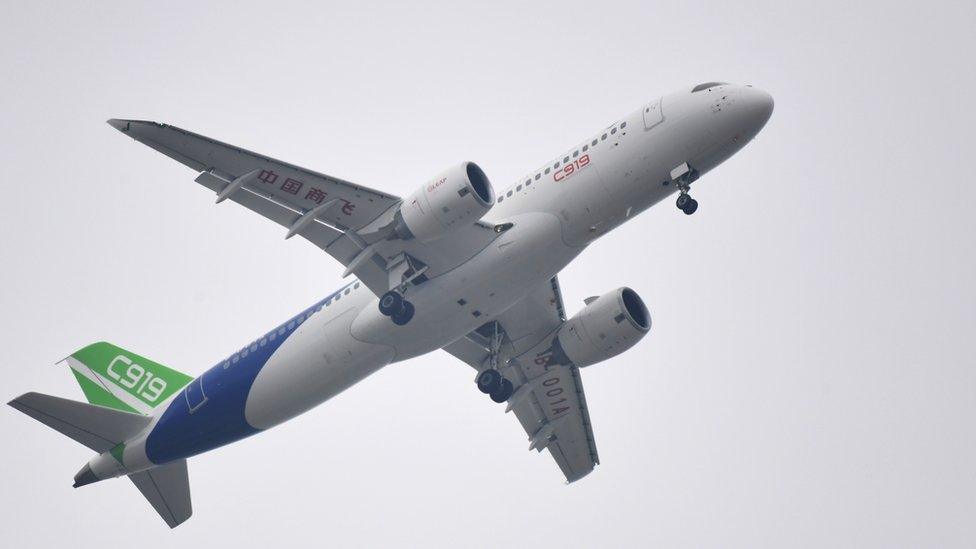Can China's plane-maker take on Boeing and Airbus?
- Published
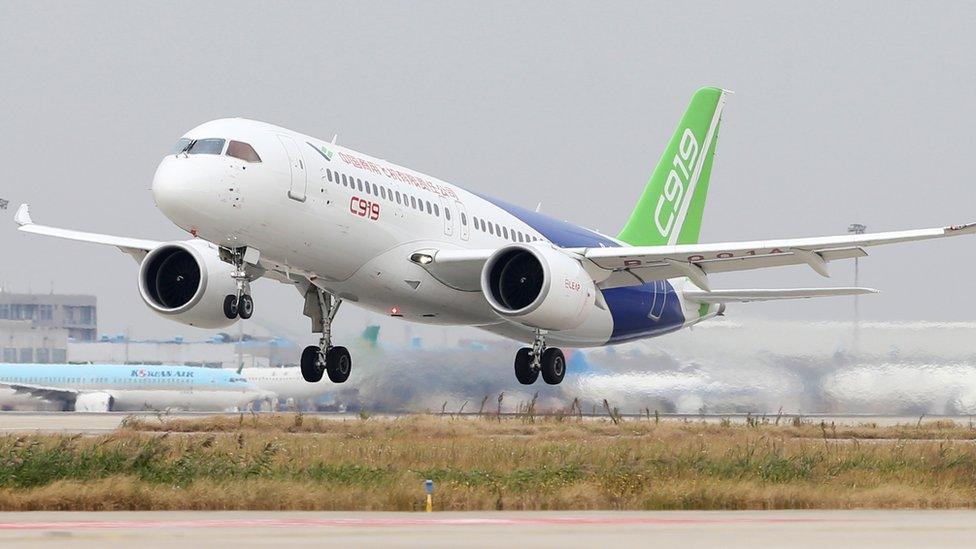
Comac's first large passenger jet, the C919, carries out a test flight in Shanghai in 2017
For the past decade China, soon to become the world's largest aviation market, has been developing its own planes as it seeks to loosen Western manufacturers' grip on the sector.
The planes made by Commercial Aircraft Corporation of China - or Comac - have drawn plenty of criticism.
Few in the industry believe Chinese-made jets will rival those of Boeing and Airbus in the near-term.
But analysts say that over time, state-backed Comac - part of China's wider push into high-tech manufacturing - could challenge the established players.
"Do not underestimate Chinese ability to penetrate markets," says Shukor Yusof, founder of aviation advisory firm Endau Analytics.
He says the landscape is likely to shift from a European-US manufacturing duopoly to accommodate a third party - "and that's probably the Chinese".
What aircraft has Comac built?
So far it has built two jets - the ARJ21 and the C919 - and is working with Russia on a third.
Only the 90-seat, ARJ21 jet is in service. However, after suffering from delays, and being plagued with noise and other problems, the aircraft has been roundly rejected as inferior to planes from competitors such as Brazil's Embraer and Canada's Bombardier.
Among the critics is Teal Group aviation analyst Richard Aboulafia.
He says that while the aircraft was touted as proof China would be the next big jet maker, it turned into an "overweight and stunningly obsolete product that has no relevance outside of China's tiny regional airline sector".
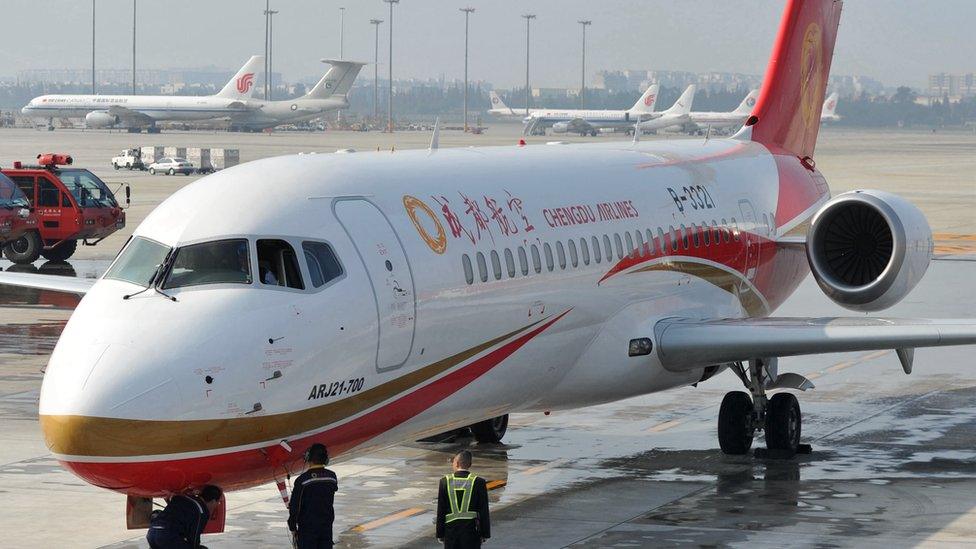
A Chenghu Airlines ARJ21 jet
Comac has bigger ambitions for the C919. Seating up to 168 people, China's first large passenger jet is designed to compete with Boeing's 737 Max and Airbus's A320neo.
Its third test flight was completed in December, external and first deliveries are scheduled for 2021.
Comac did not respond to BBC requests for comment. But data from consultancy Frost & Sullivan shows the firm has received nearly 1,000 commitments for the C919, mostly from Chinese airlines and domestic leasing firms. The order book includes the country's three major carriers Air China, China Southern and China Eastern.
Still, some remain sceptical that Comac will hit its 2021 target given the problems that surrounded its first plane. Teal Group's Mr Aboulafia says there is a "serious risk" that by the time the C919 enters service Airbus and Boeing will have far better models on offer.
In partnership with Russia, Comac is also developing the CR929, a wide-body aircraft with a range of 12,000km that seats 280 passengers.
Where can Comac jets fly?
Right now, only China's aviation regulator has certified Comac jets to fly. Its aircraft may also operate in parts of Asia, Africa and South America that recognise Chinese certification.
However, to expand beyond those markets it needs the green light from the US Federal Aviation Administration (FAA) and the European Aviation Safety Agency (EASA). Those approvals are far from certain.
"There is still a big question mark over whether it will receive a Western certification," Flight Global's Asia finance editor Ellis Taylor says.
He says Comac had hoped the ARJ21 would get FAA certification "but that has been shelved indefinitely".
Can it survive without the US and Europe?
Even if those doors remain shut, Comac has access to a huge and growing market. By the mid-2020's, China's aviation market is expected to overtake the US as the world's largest by traffic. , external
It's a major buyer of Western planes, but the crisis facing Boeing could generate more interest in locally-made alternatives.

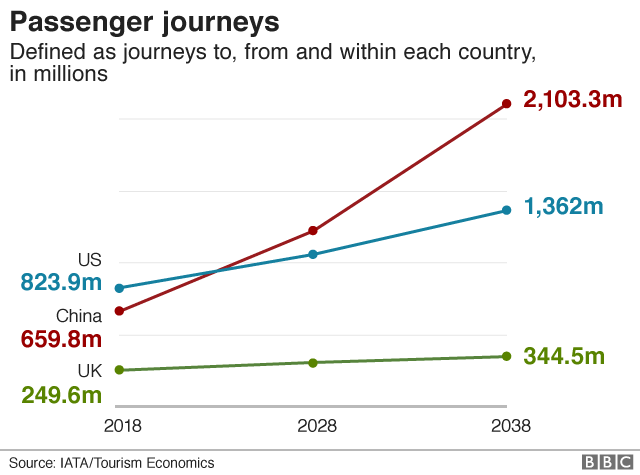

The country operates the largest fleet of Boeing 737 Max aircraft and was the first to ground the troubled jet after the deadly Ethiopian Airlines 737 Max crash in March. The same model was involved in a Lion Air crash that killed 189 people less than five months earlier.
Frost & Sullivan aerospace consultant Ramesh Tanjavuru says, provided Comac secures certification, Boeing's troubles could fuel the growth of the C919 in China and abroad.
"They could definitely fill the gap and be a significant player in China's market."
Where else is Comac targeting?
Comac also has its sights set on emerging markets in parts of Africa and Asia. Its planes are more affordable, with the C919's list price of reportedly about $50m (£38.8m) roughly half the price of the Airbus A320neo, external.
But the push into these regions also supports Beijing's broader foreign policy goals.
China, through its Belt and Road initiative, is pouring as much as $1 trillion into infrastructure projects around the world. Endau Analytics' Mr Yusof says China's entry into plane manufacturing is part of this drive.
He says some countries in Africa have received loans to build airports that are designed to meet the requirements of the ARJ21. Aiding poorer countries with infrastructure development, Mr Yusof says, is another way of building Comac's customer base.
"We can't just underestimate the Chinese ability to go into markets and carve a niche where Airbus and Boeing aren't interested [such as] Africa or central Asia."
- Published26 March 2019

- Published29 June 2018

- Published15 March 2019
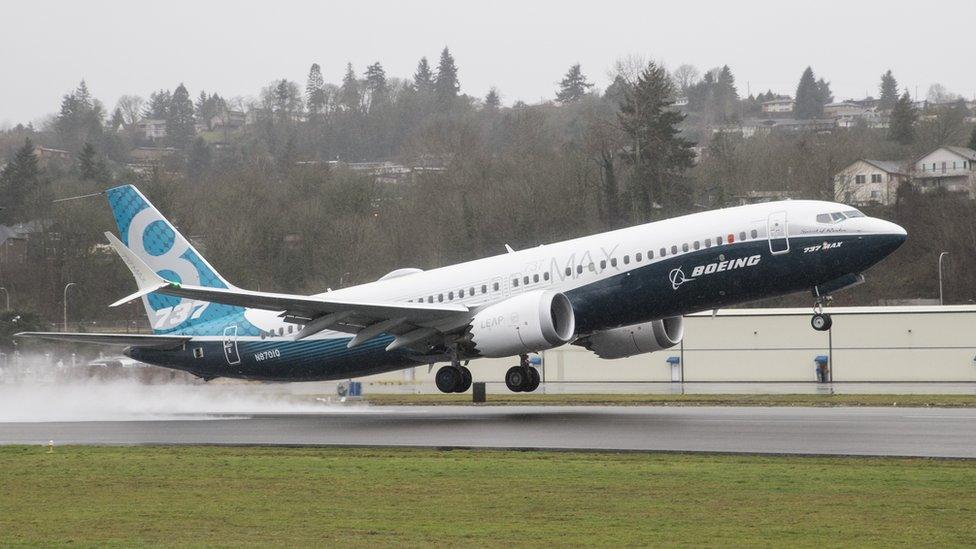
- Published5 May 2017
